Let me ask you something: When was the last time you truly saw the stars?
Not just a few dim dots fighting against the orange glow of city lights. I’m talking about thousands—no, millions—of stars scattered across a velvet-black sky. The kind of view that makes you stop mid-sentence and just… stare.
If you’re living in Delhi NCR, chances are you haven’t experienced this in years. Maybe ever.
But here’s the exciting part: that experience is closer than you think. Just a few hours from Delhi, there’s a place where the cosmos comes alive every night. Where you can watch tigers prowl through ancient forests by day and track distant galaxies through professional telescopes by night.
This guide will help you discover the best time for stargazing in India and how to make the most of it.
Welcome to your perfect astronomy weekend from Delhi—and trust me, it’s unlike anything you’ve experienced before.
Why Delhi Needs This Escape (And Why You Deserve It)
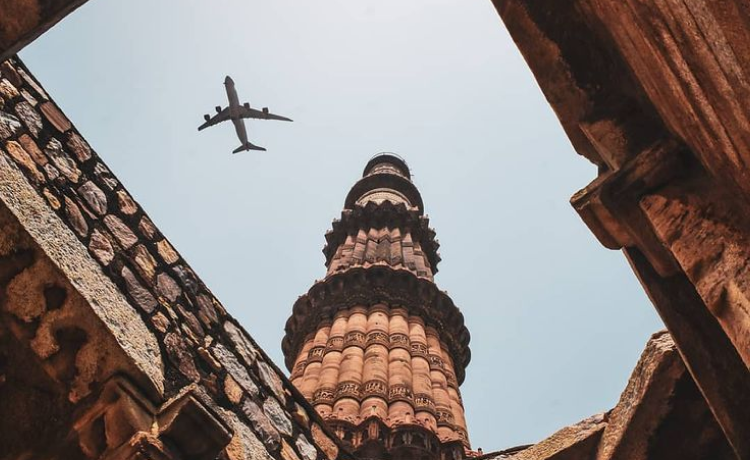
Delhi’s lights never really turn off. The constant glow from millions of streetlights, buildings, and vehicles creates what astronomers call “light pollution.” It’s so severe that most Delhi residents can only see about 50 stars on a clear night.
Want to know how many stars you should be able to see? Try 2,500.
That’s not just a missed photo opportunity. It’s a disconnection from something fundamental. For thousands of years, humans have gazed up at the stars to navigate, to dream, to understand our place in the universe. Today’s kids are growing up never seeing the Milky Way with their own eyes.
But I’m not here to lecture you about light pollution. I’m here to tell you about the solution.
An astronomy weekend from Delhi isn’t just about escaping the city glow. It’s about reconnecting with something ancient and profound. It’s about showing your kids (or your inner child) what the universe actually looks like. And at Astroport Sariska, it’s about doing all of this while tracking Bengal tigers and learning from actual astronomers.
Finding the best time for stargazing in India is the first step to this incredible journey.
Sounds ambitious? Let me show you exactly how it works.
To learn how to make the journey, check out our comprehensive Delhi to Sariska travel guide.
What Makes Astroport Sariska Your Perfect Astronomy Weekend from Delhi
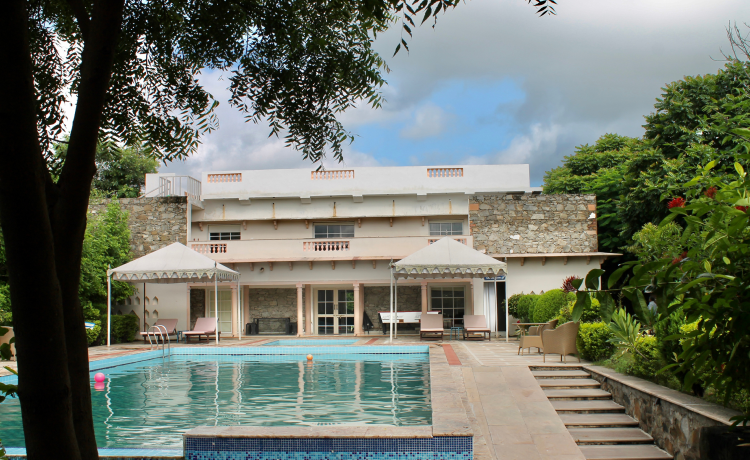
Here’s the honest truth: you could drive to any random dark spot outside Delhi and see more stars. But would you know what you’re looking at? Would you have a telescope powerful enough to see Saturn’s rings or Jupiter’s moons? Would you have an expert explaining why that fuzzy patch is actually a stellar nursery where baby stars are being born?
Probably not.
That’s the Astroport difference.
We stand out as one of the top choices for a reason; discover why we are the best stargazing destination near Delhi.
Located in the heart of the Aravalli Mountain Range, just a comfortable drive from Delhi NCR, Astroport Sariska sits in one of Northern India’s darkest sky zones. We’re talking Bortle Scale 3-4 darkness—the kind of pristine skies that professional astronomers dream about.
But darkness alone doesn’t make a great astronomy weekend from Delhi. Here’s what does:
Professional Equipment in Your Hands
We don’t use toy telescopes. Our high-powered, professional-grade telescopes can reveal details that blow people’s minds every single night.
Imagine seeing the rings of Saturn with your own eyes—not in a textbook, not on a screen, but actually seeing them hanging in space. Or watching the Great Red Spot swirl across Jupiter’s surface. Or peering into the Orion Nebula and realizing you’re looking at stars being born right now, 1,500 light-years away.
For many, this is the best time for stargazing in India.
These aren’t experiences you can have with a pair of binoculars or a basic telescope. This requires serious equipment and serious expertise.
To get a sense of the full experience, take a look at our guide to the best weekend astronomy getaways from Delhi.
Expert Astronomers Who Actually Teach
Let’s be real: pointing a telescope is the easy part. Understanding what you’re looking at? That’s where the magic happens.
Our team of experienced astronomers and educators doesn’t just show you celestial objects. They help you understand them. They translate complex astronomical concepts into simple, engaging stories. They answer your questions (yes, even the “silly” ones—there are no silly questions in astronomy).
Whether you’re 8 or 80, whether you failed physics or aced it, our team ensures you leave your astronomy weekend in Delhi with genuine knowledge and newfound wonder about what the best time for stargazing in India really is.
The Astro-Safari Experience: Because Why Choose?
Here’s where things get really interesting.
Most people think they need to choose: nature or astronomy. Wildlife or stargazing. Day adventure or night adventure.
At Astroport Sariska, you get both.
By day, you’re tracking Bengal tigers through the Sariska Tiger Reserve—one of India’s most important conservation success stories. By night, you’re tracking nebulae through our telescopes.
We call it the Astro-Safari experience, and honestly? It’s addictive. There’s something profound about connecting with the wild beauty of Earth during the day and then zooming out to contemplate the universe at night. It gives you perspective. It reminds you that you’re part of something incredibly vast and incredibly beautiful.
When to Plan Your Astronomy Weekend from Delhi: Timing Is Everything
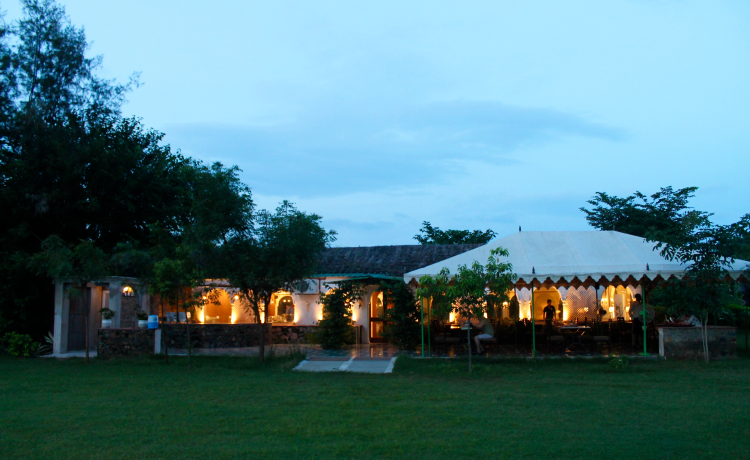
Okay, you’re sold on the idea. Now comes the practical question: when should you actually go?
The short answer?
The short answer? Our winter season (October-February) is your golden window and the best time for stargazing in India.
The longer answer? It depends on what you prioritize. Let me break it down season by season, because understanding the nuances will help you plan the perfect astronomy weekend from Delhi for your specific interests.
Winter Wonderland: October to February (The All-Rounder)
If you’re planning your first astronomy weekend from Delhi, this is your season. Many believe this is the best time for stargazing in India.
Why it’s perfect:
- Crystal-clear skies with minimal haze
- Comfortable nighttime temperatures (around 8-10°C)
- Pleasant daytime weather for safaris (22-25°C)
- The Sariska Tiger Reserve is fully accessible
- Peak season for viewing the Orion constellation and the Orion Nebula
January, in particular, is magical. The Orion constellation dominates the southern sky, and through our telescopes, the Orion Nebula (M42) reveals itself as a spectacular cloud of gas and dust where new stars are forming.
This is what makes it the best time for stargazing in India for celestial viewing.
For beginners and families, this season offers the perfect balance. The weather is comfortable enough that kids won’t complain. The skies are clear enough that you’re virtually guaranteed stunning views. And the wildlife is active enough that your safari will be exciting.
Pro tip: Book your astronomy weekend from Delhi around the new moon phase for the darkest skies possible. This will give you the best time for stargazing in India.
Hot Season: March to June (For the Dedicated)
Let me be upfront: this season is HOT. We’re talking 40°C (104°F) kind of hot.
But hear me out.
For serious wildlife enthusiasts:
The dry air in the hot season makes it the best time for stargazing in India if you’re a serious astronomy lover, as the galactic core is perfectly visible.
As water sources dry up, animals congregate around the remaining permanent water holes. This dramatically increases your chances of spotting not just tigers, but also leopards, sloth bears, and numerous other species.
For astronomy lovers:
The dry air in the hot season makes it the best time for stargazing in India if you’re a serious astronomy enthusiast, as the galactic core is perfectly visible. While the heat can cause some atmospheric distortion during the day, nighttime observations are often pristine. Plus, this is prime Milky Way season. From March onwards, the galactic core rises during night hours, offering that iconic, breathtaking view of our galaxy’s dense center.
If you can handle the heat (and we have air-conditioned accommodations, don’t worry), this season offers rewards that the more comfortable winter months can’t match.
Think of it as your astronomy weekend from Delhi on hard mode—with corresponding rewards.
The best time for stargazing in India really depends on your goals!
Monsoon: July to September (The Learning Season)
Full transparency: this is not the ideal time for traditional stargazing or safaris.
The monsoon brings heavy clouds, which obviously interfere with telescope observations. The core safari zones are also closed from July 1st to September 30th for the conservation and breeding season.
But here’s the Astroport guarantee:
We never let the weather ruin your experience. During monsoon or cloudy nights, any time of year, we pivot to our specialized indoor programs. These aren’t consolation prizes—they’re deep educational experiences.
You’ll participate in:
- Interactive workshops on astrophotography techniques
- High-resolution planetarium shows
- Hands-on sessions exploring telescope mechanics
- Discussions about current space missions
- Advanced topics like spectroscopy and celestial navigation
Many guests tell us these indoor sessions are when concepts truly “click” for them. Without the pressure of a ticking telescope clock, you can really dive deep into the theory and science.
Even during monsoon, you can learn about the best time for stargazing in India.
So even if you accidentally plan your astronomy weekend from Delhi during monsoon season, you’ll still leave with knowledge and experiences you’ll treasure.
The Moon: Your Secret Weapon for Perfect Stargazing
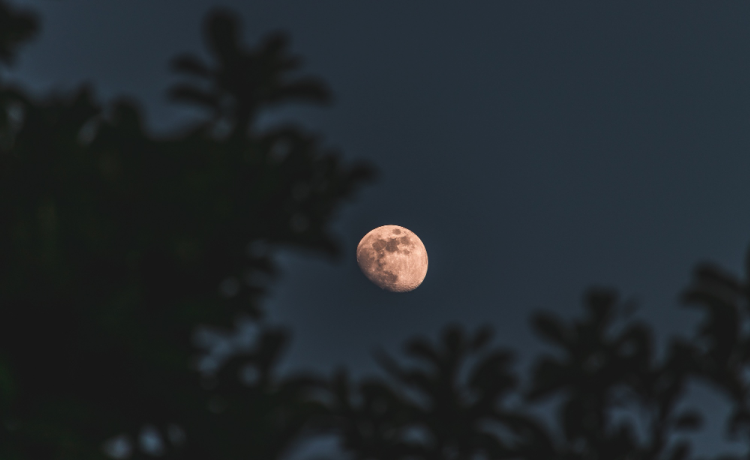
Here’s something most people don’t know: the moon can be your best friend or your worst enemy.
When you’re trying to view planets? The moon’s presence doesn’t matter much. When you’re hunting for deep-sky objects like nebulae and galaxies? A bright moon is a disaster.
Moonlight is basically natural light pollution. A full moon can be 400,000 times brighter than Venus. It completely washes out faint celestial objects, drowning them in its reflected glow.
The solution? Plan your astronomy weekend from Delhi around the new moon phase. This is how you find the best time for stargazing in India.
The new moon occurs once per month when the moon sits between Earth and the sun, making it invisible from our perspective. During the few days before and after the new moon, the sky is at its absolute darkest.
This is when the Milky Way truly comes alive. When distant galaxies become visible. When the full magic of a dark sky reveals itself. It’s what makes for the best time for stargazing in India.
Before you book your trip, check a lunar calendar. Aim for dates within 4 days before or after the new moon. This single tip will transform your experience from “great” to “unforgettable.” It is the secret to finding the best time for stargazing in India.
Trust me on this one. I’ve seen the same guests visit during different moon phases, and their reactions are night and day (pun absolutely intended).
What You’ll Actually See: A Celestial Preview
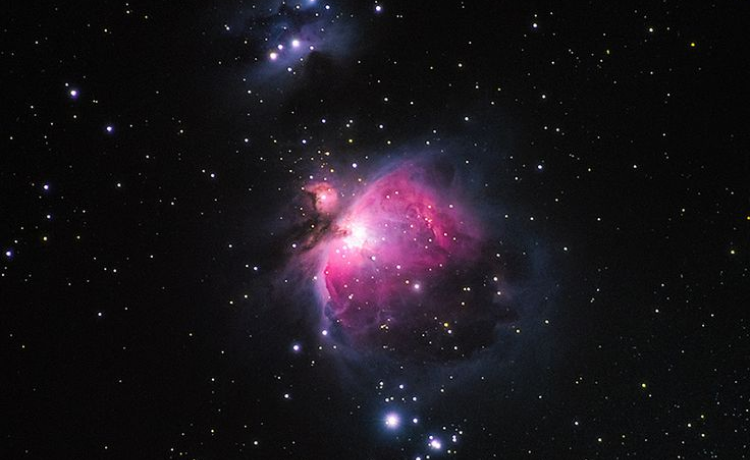
Let me paint you a picture of a typical night at Astroport during your astronomy weekend from Delhi.
You’ve finished dinner (probably still talking about the tiger you spotted during the afternoon safari). The sun has set. As twilight fades, you walk with our astronomers to the observation area.
The first stars appear. Then dozens more. Then hundreds, giving them a real-time experience of why this is the best time for stargazing in India for galactic viewing.
Within 30 minutes of full darkness, the sky transforms into something you’ve only seen in photographs. The Milky Way stretches overhead like a cosmic river. Shooting stars streak across your peripheral vision every few minutes.
But that’s just with your naked eyes. Here’s what you’ll see through our professional telescopes:
The Orion Nebula (M42) – December Through February
This is the crowd-pleaser. Even through light pollution, M42 is visible as a fuzzy star in Orion’s sword. But through our telescopes? It explodes into a magnificent cloud of pink and green gas. You’re literally looking at a stellar nursery where new stars are being born.
The Orion Nebula is 1,500 light-years away, meaning the light you’re seeing left that nebula 1,500 years ago. You’re seeing the past. You’re seeing creation in action.
Most people go silent when they first see it. It’s that overwhelming.
Saturn – When in Position
If there’s one object that makes people gasp audibly, it’s Saturn. Pictures don’t do it justice. When you see those rings with your own eyes—not on a screen, not in a book, but floating there in real space—something shifts in your brain.
You suddenly, viscerally understand that planets are real places. That the universe is real. That we’re living in a solar system that’s simultaneously tiny and impossibly vast.
The Milky Way Core – March Through October
During new moon nights in the right season, the Milky Way’s dense core rises above the horizon. What you see is the edge-on view of our galaxy’s disk—billions of stars so densely packed that they create a glowing band across the sky.
Photographs of the Milky Way have become cliché, but seeing it with your own eyes is completely different. It’s enormous. It’s three-dimensional. It moves across the sky as Earth rotates.
Guests often tell us this is when they truly grasp the scale of space. When they realize they’re standing on a planet that’s orbiting a star that’s just one of hundreds of billions in this galaxy alone.
Jupiter and Its Moons
Jupiter is another showstopper. Through our telescopes, you can see the famous bands of clouds wrapping around the planet. You can watch the Great Red Spot (a storm larger than Earth) rotate into view.
But here’s the really cool part: you can see Jupiter’s four largest moons—Io, Europa, Ganymede, and Callisto. These are the moons that Galileo discovered in 1610, the observations that helped prove Earth wasn’t the center of the universe.
You can watch these moons change position from night to night. If you’re lucky, you might see one disappear behind Jupiter or cast its shadow on the planet’s surface.
These aren’t abstract concepts in a textbook. This is happening in real-time, and you’re watching it unfold.
Beyond the Telescopes: Your Complete Astroport Experience
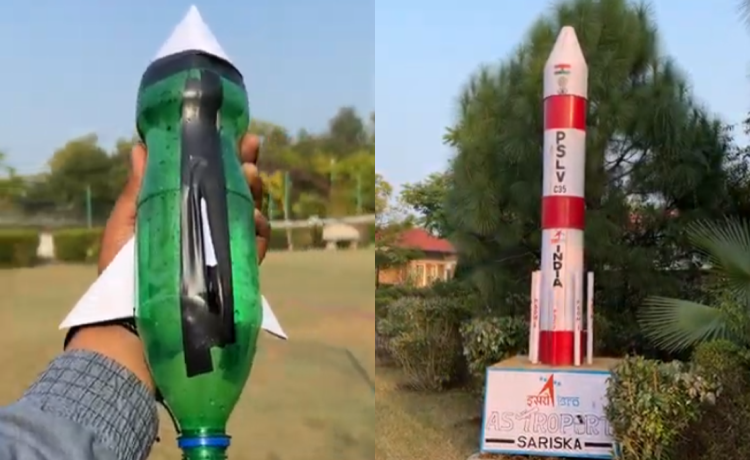
Here’s what makes Astroport Sariska more than just “a place with telescopes.” It’s what transforms your astronomy weekend from Delhi into a comprehensive educational adventure.
Daytime Solar Observations
Astronomy doesn’t stop when the sun comes up. In fact, our sun is the only star we can study in detail.
We conduct safe solar observation sessions using specialized telescopes equipped with solar filters. You’ll see sunspots—dark patches on the sun’s surface that are actually cooler regions caused by magnetic activity. You might see solar prominences—massive loops of plasma arcing off the sun’s surface.
Our astronomers explain what you’re seeing in real-time, connecting solar activity to phenomena you’ve heard about: solar flares, coronal mass ejections, and the aurora borealis.
It’s a fascinating complement to nighttime observations, and it’s especially popular with kids who can’t quite make it through full nighttime sessions.
Hands-On Workshops
We’re not just showing you the universe. We’re teaching you how to explore it yourself.
Our workshops covers:
Astrophotography Basics:
Learn how to capture the night sky with your own camera. We cover equipment, settings, composition, and post-processing techniques. By the end of the session, you’ll understand why astrophotography is both challenging and incredibly rewarding.
Constellation Navigation:
Discover how to find your way around the night sky. Learn to identify major constellations, how to use them to locate other objects, and the ancient stories behind their names.
Telescope Mechanics:
Ever wondered how telescopes actually work? We break down the optics, explain the difference between refractors and reflectors, and show you how to choose equipment for home use.
Current Space Missions:
Our team stays updated on current space exploration. We discuss active missions to Mars, Jupiter, and beyond. We explain new discoveries and what they mean for our understanding of the universe.
These workshops transform passive observation into active learning. You’re not just a tourist—you’re becoming an astronomer yourself.
For more details on these specialized activities, explore our full list of astronomy activities at Astroport Sariska.
The Wildlife Safari Connection
Let’s talk about the other half of your astronomy weekend from Delhi: the Sariska Tiger Reserve.
Sariska is one of India’s Project Tiger reserves, a success story in conservation. The park is home to Bengal tigers, leopards, jungle cats, hyenas, sloth bears, and hundreds of bird species.
We’re located near Tehla Gate (Gate No. 2), which offers excellent access to the park’s core zones. Here’s what makes the safari experience special:
Expert Guidance
We help coordinate your safari bookings (which can be complicated) and connect you with experienced naturalist guides who know where to look and what to look for.
Optimal Timing
Morning and late afternoon safaris coincide perfectly with our astronomy schedule. You can spot tigers during golden hour, return to Astroport for lunch and relaxation, then gear up for evening observations.
Educational Integration
Our naturalists and astronomers often collaborate on themes. You might discuss cosmic evolution at night and biological evolution during the day. It’s a holistic understanding of how complex systems—whether solar systems or ecosystems—develop over time.
The Astro-Safari combination isn’t just marketing. It’s a genuinely integrated experience that gives you multiple perspectives on nature, scale, and beauty.
Practical Planning: Making Your Astronomy Weekend from Delhi Happen
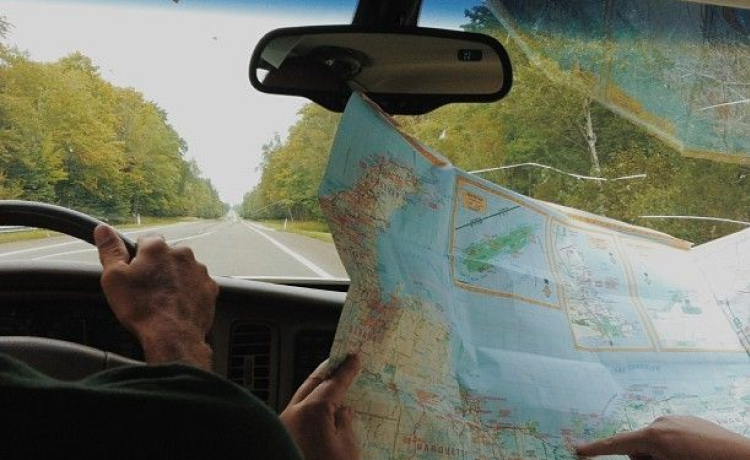
Alright, let’s get into the logistics. You’re excited. You’re ready to book. Here’s exactly how to plan your perfect astronomy weekend from Delhi.
Getting There
Astroport Sariska is approximately 200 kilometers from Delhi—about a 3.5 to 4-hour drive depending on traffic.
By Car: Take the Delhi-Jaipur Highway (NH-48), exit at Shahjahanpur, and follow signs toward Sariska. The drive is scenic, passing through rural Rajasthan landscapes.
By Train: The nearest railway station is Alwar, about 37 kilometers away. From there, you can hire a taxi or arrange pickup with Astroport.
Most guests prefer driving because it offers flexibility and the route is straightforward.
What to Pack
For Stargazing:
- Warm layers (nights get cold, even when days are pleasant)
- Comfortable shoes for walking to observation areas
- A red LED flashlight (to preserve night vision)
- Your camera, if you want to try astrophotography
- Notebook and pen (you’ll want to record what you learn)
For Safari:
- Binoculars, if you have them
- Neutral-colored clothing (avoid bright colors)
- Hat and sunscreen
- A camera with a good zoom lens
- Reusable water bottle
General:
- Valid ID proof (required for safari bookings)
- Any prescription medications
- Personal toiletries
- Comfortable casual wear for resort activities
Booking Your Safari
Safari permits are limited, so advance booking is essential. Here’s how it works:
- Sariska allows 20 jeeps per shift at Sariska Gate and 8 jeeps at Tehla Gate
- Booking is first-come, first-served and requires advance payment
- You must book at least one day ahead (same-day bookings may incur additional charges)
- Valid ID proof is mandatory for all passengers
We help simplify this process for our guests. Just let us know your preferred dates and timings, and we’ll coordinate the logistics.
How Long to Stay
While a weekend (2 nights) gives you a solid introduction, we actually recommend 3 nights if your schedule allows.
Here’s why: astronomy requires patience and some luck with the weather. An extra night dramatically increases your chances of experiencing pristine, clear skies. It also lets you relax into the rhythm of the place rather than feeling rushed.
A typical 3-night astronomy weekend from Delhi might look like:
Day 1: Arrive in the afternoon, settle in, attend evening orientation, and first telescope session.
Day 2: Morning safari, afternoon workshop, evening deep-sky observation.
Day 3: Morning safari, daytime solar observation, evening astrophotography session.
Day 4: Morning at leisure, optional activities, depart after lunch
This schedule balances intensity with relaxation, giving you time to absorb what you’re learning.
For a detailed breakdown of what a multi-day trip looks like, check out our 3-day itinerary for an astronomy weekend from Delhi.
Why This Matters: The Bigger Picture
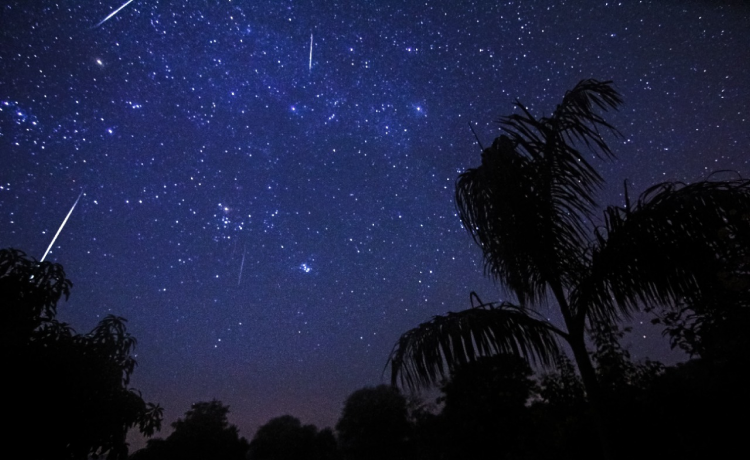
I want to pause here and talk about something important.
In our hyperconnected, screen-saturated world, we’ve lost touch with something fundamental: the night sky. For 99.9% of human history, every person on Earth could see thousands of stars every clear night. The sky was humanity’s first calendar, first compass, and first inspiration for mathematics and philosophy.
Today, 80% of people live under light-polluted skies. One-third of humanity can’t see the Milky Way from their homes. We’ve gained so much with modern lighting, but we’ve also lost something profound.
Your astronomy weekend from Delhi isn’t just about entertainment (though it is entertaining). It’s about reconnecting with something ancient and essential. It’s about showing the next generation that the universe is vast, beautiful, and knowable. It’s about experiencing genuine wonder in an age of manufactured experiences.
At Astroport Sariska, we’re not just running a resort. We’re protecting something precious: dark skies. Our commitment to sustainable, dark-sky-compliant lighting isn’t just good environmental practice. It’s an investment in preserving access to the universe for future generations.
To learn more about our unique offerings and the philosophy behind our work, read our full article on why Astroport Sariska is India’s first astronomy resort.
When you visit, you’re supporting that mission. You’re voting with your wallet for conservation, for education, for the value of natural beauty over convenience.
And honestly? You’re treating yourself to an experience you’ll remember forever.
Our Commitment: Sustainability Meets Luxury
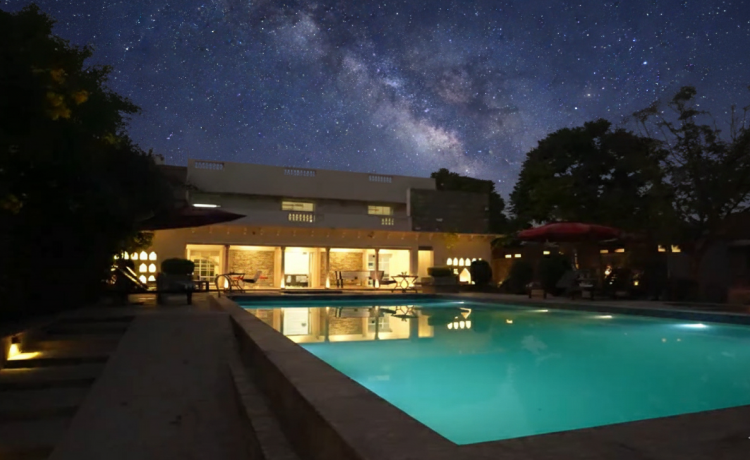
Let’s talk about how we operate, because it matters.
Astroport Sariska is run by ARANYA ASTRO TOURISM PRIVATE LIMITED, and we’re obsessive about minimizing our environmental footprint. Here’s what that means in practice:
Dark-Sky Lighting:
Every single light on our property—buildings, pathways, roads—is designed to minimize light pollution. We use downward-facing fixtures with warm, golden hues (never harsh whites or blues). This serves two purposes: protecting the night sky for astronomy and protecting wildlife from disruptive artificial lighting.
Sustainable Operations:
We’ve implemented water conservation systems, waste reduction programs, and renewable energy where possible. We source locally to support the regional economy and reduce transportation emissions.
Conservation Education:
We don’t just take from nature—we teach about it. Our programs emphasize conservation, from the importance of protecting tiger habitats to the critical need to preserve dark skies.
Community Integration:
We work with local communities, providing employment and supporting regional development. Your astronomy weekend from Delhi contributes to sustainable livelihoods in rural Rajasthan.
You might expect that “eco-resort” means rough camping and cold showers. Not here. We prove that sustainability and comfort aren’t mutually exclusive. You get clean, comfortable accommodations with modern amenities—all while knowing your visit supports responsible tourism.
Real Guests, Real Reactions
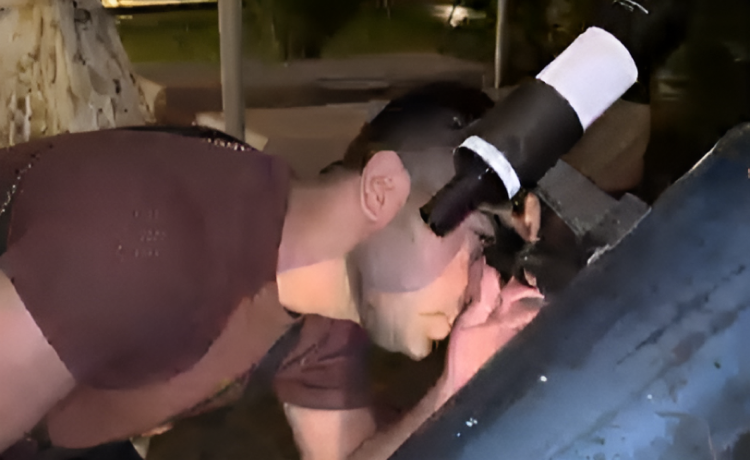
Let me share what people actually say after their astronomy weekend from Delhi at Astroport.
Parents tell us their kids won’t stop talking about the Orion Nebula. Teachers tell us they finally understand concepts they’d been teaching for years. Photographers tell us they got shots they never thought possible from India.
But the comment we hear most often? “I didn’t know it could look like this.”
That moment—when someone realizes just how much beauty they’ve been missing—is why we do this work.
We’ve had guests who’ve changed career paths after visiting, inspired to pursue astronomy or conservation. We’ve had couples who got engaged under our dark skies. We’ve had families who’ve made it their annual tradition.
The common thread? Everyone leaves with a shifted perspective. Once you’ve seen Saturn’s rings with your own eyes, once you’ve watched a shooting star while learning about meteor showers, once you’ve stood beneath the Milky Way in all its glory—you see the world differently.
You understand your place in the cosmos a little better. You feel connected to something larger. You carry that wonder back to Delhi with you.
You can also discover why we’ve been called a “hidden gem” in our blog post, Astroport Sariska: The Hidden Astro-Retreat in Delhi NCR.
Frequently Asked Questions

Q1: Do I need any prior knowledge or experience to enjoy astronomy at Astroport?
Absolutely not! That’s the whole point. Our programs are specifically designed for beginners and curious minds. Our expert astronomers translate complex concepts into simple, engaging explanations. Whether you’re 8 or 80, whether you can’t remember high school physics or you’re an amateur astronomer yourself, we tailor the experience to your level. The only prerequisite is curiosity.
Q2: What happens if it’s cloudy during my astronomy weekend from Delhi?
Great question—we guarantee you’ll have a valuable experience regardless of the weather. During cloudy nights or monsoon season, we shift to our comprehensive indoor programs: interactive workshops, planetarium presentations, telescope mechanics sessions, and discussions about current space missions. Many guests tell us these educational deep-dives are when concepts truly “click.” You’ll leave with knowledge and skills that enhance future stargazing, even if the weather doesn’t cooperate during your stay.
Q3: How do I book a safari from Astroport Sariska?
We make it easy. Safari booking can be complicated because permits are limited and the system runs on a first-come, first-served basis. When you book with Astroport, our team helps coordinate your safari reservations. We need your preferred dates and valid ID proof (Aadhar card or PAN card for Indian nationals; passport for international guests). We recommend booking safaris at least one day in advance to ensure availability, especially during peak season.
Q4: Is Astroport suitable for families with young children?
Absolutely! We’re extremely family-friendly. Kids are naturally curious about space, and seeing the universe through a real telescope is magical for them. We adjust our explanations to suit different age groups. The combination of tiger safaris during the day and stargazing at night keeps everyone engaged. That said, very young children (under 5) might struggle with late-night observation sessions, so we recommend bringing them during seasons with earlier darkness or focusing on daytime solar observations and workshops.
Q5: What’s the best time for a stargazing weekend from Delhi if I can only visit once?
If you’re planning just one trip, we strongly recommend October through February—particularly November through January. This window offers the perfect combination: crystal-clear skies for astronomy, comfortable temperatures, full access to Sariska Tiger Reserve, and spectacular celestial targets like the Orion constellation and nebula. Most importantly, try to plan your visit within 4 days of the new moon phase for the darkest possible skies.
This window offers the perfect combination. To explore other options, see our guide on the best stargazing resorts near Delhi.
Q6: Can I bring my own telescope or camera equipment?
Yes! We welcome astrophotography enthusiasts and amateur astronomers who want to use their own equipment. We can help with setup, provide guidance on optimal settings, and even assist with polar alignment for tracking mounts. That said, our professional-grade telescopes are significantly more powerful than most consumer equipment, so you’ll want to spend time with ours regardless. If you’re new to astrophotography, our workshops will teach you techniques you can use with any camera.
Q7: How far in advance should I book my astronomy weekend from Delhi?
Peak season (November through February) and new moon weekends book up quickly—sometimes months in advance. We recommend booking at least 4-6 weeks ahead if you have specific dates in mind, especially if you’re planning around new moon phases. Shoulder seasons (March, October) typically have better availability with 2-3 weeks’ notice. If you’re flexible on dates, we can often accommodate shorter notice during off-peak periods.
Your Universe Awaits: Take the First Step
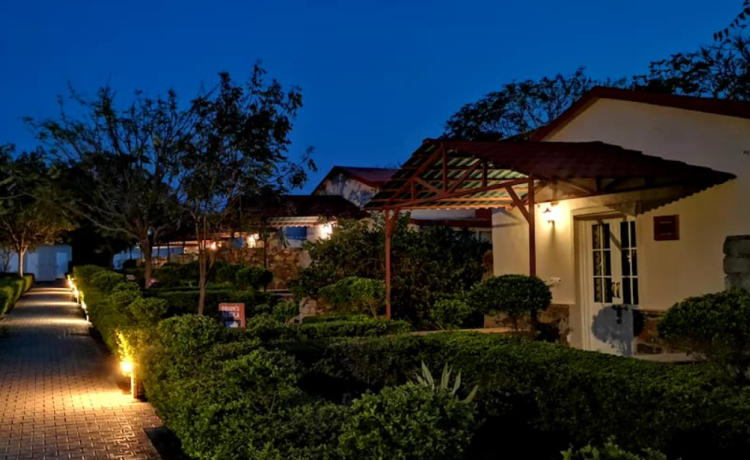
Here’s the truth: you could read a hundred articles about astronomy. You could watch documentaries. You could study constellation maps and download stargazing apps.
But nothing compares to standing under a truly dark sky, watching the Milky Way stretch overhead, and peering through a professional telescope at galaxies billions of light-years away.
That experience changes you. It gives you perspective. It connects you to the wonder that inspired every astronomer, philosopher, and explorer throughout human history.
Your astronomy weekend from Delhi is more than a vacation. It’s an investment in wonder. It’s a gift to yourself, your family, or your partner.
It’s a chance to slow down, look up, and remember that we’re all part of something impossibly vast and impossibly beautiful.
At Astroport Sariska, we’ve spent years perfecting this experience. We’ve combined world-class astronomy with thrilling wildlife safaris.
We’ve built infrastructure that respects the environment while providing comfort. We’ve assembled a team of passionate educators who genuinely care about sharing their knowledge.
We’re ready for you.
The question is: are you ready for the universe?
Book Your Astroport Adventure Today
Don’t let another season pass by watching the city glow instead of the cosmos. Don’t let another weekend slip by without experiencing what the night sky actually looks like.
Check the lunar calendar. Find a new moon weekend between October and March. Gather your family, partner, or simply yourself.
And come discover what you’ve been missing.
Contact Astroport Sariska to book your adventure:
- Visit our website to check availability and view our seasonal calendar
- Call our booking team to discuss custom itineraries
- Ask about our special packages for families, students, and photography enthusiasts
The universe is waiting. The tigers are prowling. The telescopes are ready.
Your adventure begins now.
Astroport Sariska: Where the wild beauty of Earth meets the endless wonder of the cosmos.
